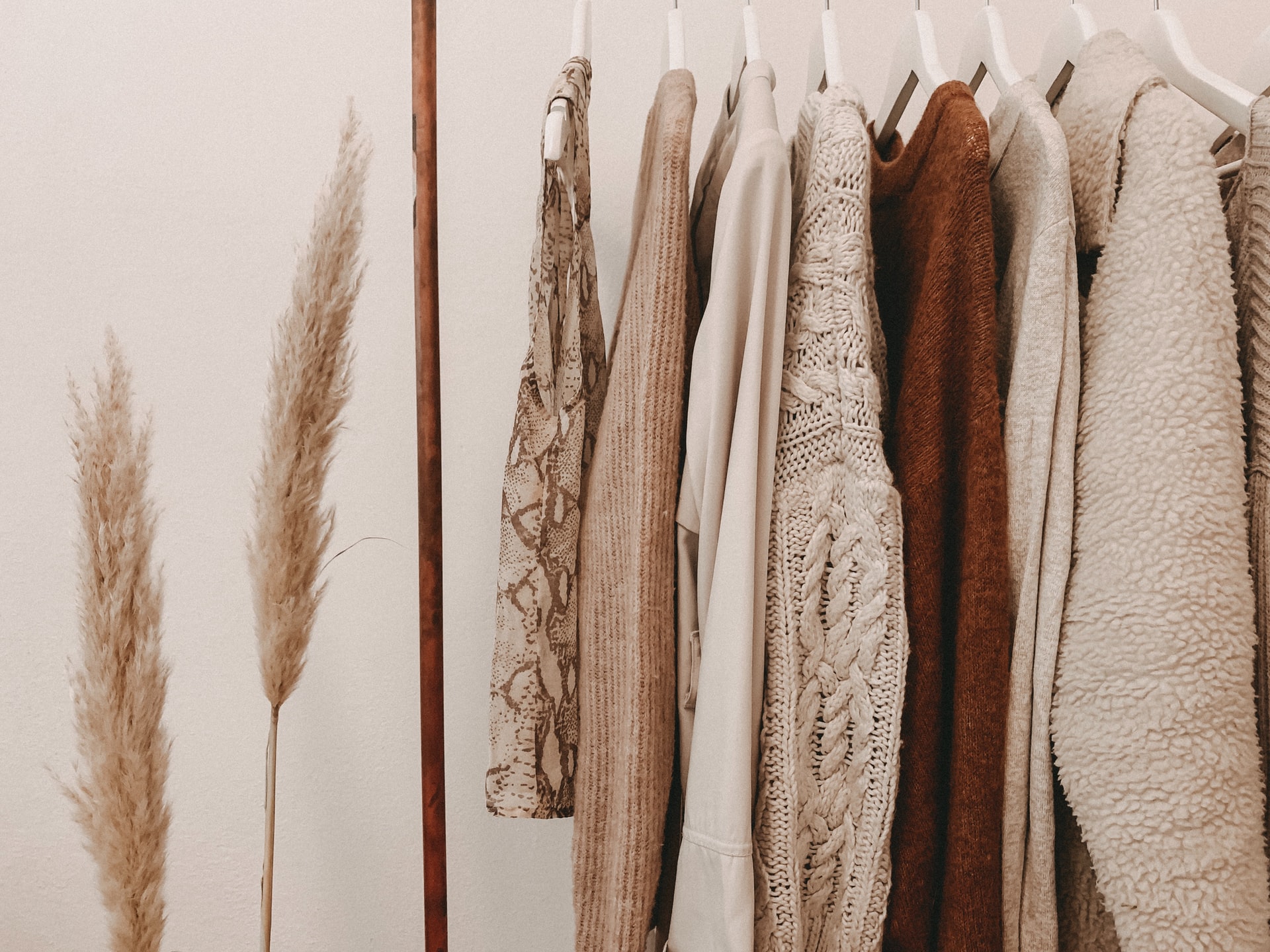
Photo by Alyssa Strohmann on Unsplash
Creating an ethical wardrobe isn’t simply a trend but can be a powerful way of approaching fashion. Fast fashion damages the environment by polluting our air with plastic microfibers and contaminating our water resources. 64% of new fabrics for clothes are made using plastic. Not to mention, many clothing manufacturers in other parts of the world violate human rights through extreme working conditions and child labor.
Building a sustainable wardrobe means wearing clothes that don’t contribute to harming the environment through waste and emissions, along with clothing brands that don’t partake in violating the basic human rights of labor.
Choose Eco-Friendly Fabrics
It’s imperative to know which fabrics are good for the environment. This will help ensure that your wardrobe is not contributing to pollution. Look for natural materials that are biodegradable such as hemp, linen, organic cotton, silk, wool, and rayon. These materials do not harm the environment and still look aesthetically appealing.
Materials like regular cotton pollute the environment and harm human health. Nylon and polyester create nitrate oxide, a form of greenhouse gas much more potent than carbon dioxide, and these fabrics are not recyclable.
Shoes are another big contributor to pollution. 8.1% of the world’s greenhouse gases stem from the apparel and footwear industry. Instead, look for sustainable shoes that benefit the planet.
Select C2C Certified Products
Consider choosing sustainable brands that are Cradle to Cradle (C2C) certified. This certification assesses the responsibility, safety, and circularity of products and materials across five categories of sustainability performance. This includes:
- Material health: Ensures materials are safe for the environment and humans
- Product circulatory: Enables a circular economy through the use of recyclable products
- Clean air and climate protection: Promotes renewable energy, protects clean air, and reduces harmful emissions
- Water and soil stewardship: Safeguards clean water and healthy soils
- Social fairness: Contributes to a fair and equitable society and respects human rights
Declutter and Curate
Before building a sustainable wardrobe, it’s important to sort through and declutter unnecessary items. Every environmentally conscious person begins by reusing clothes that they already own or donating them to people who need them.
Even if the item isn’t made from sustainable items, it’s still better to keep the clothing since it’s already in circulation. However, clothing made from synthetic materials like polyester, nylon, acrylic, and acetate releases tiny microplastics each time they are washed.
As a result, these microplastics end up in seas and rivers. The plastics are swallowed by fish. When we ingest these fish, the pollutants can interfere with the human endocrine system and generate genetic modifications. About 15 to 51 trillion microplastics particles float around in the oceans. In this case, it’s best to wash these clothes with microplastics less and opt to line dry them instead.
Buy Less
One way to create a sustainable wardrobe on a budget is to simply purchase fewer clothes. There’s no reason to cycle through the latest name-brand item. It only fuels the perpetual cycle for brands to produce clothes from cheap fabrics that damage the planet.
Choose to buy quality pieces that last longer to prevent the need to replace clothing items over and over again. Not to mention, it’s much more expensive to buy clothes every month continually.
Purchase Second-Hand Clothes
Second hand-stores are becoming increasingly popular these days. Buying second-hand clothes help to reduce the number of items that go into landfill. In fact, the EPA reported about 17 million pounds of textiles that end up in landfills. These landfills only contribute to resource contamination, pollution, and the rise of greenhouse gases. Additionally, it takes thousands of years to biodegrade.
Build a Sustainable Capsule Wardrobe
Once the unwanted clothes are donated, and only the essentials are left, it’s time to build a new capsule wardrobe. The key is to identify base key colors, patterns, and textiles.
Opt for base colors that go with everything. These are neutral tones like white, black, grey, and navy blue. These colors will form the foundation of your outfits. These base colors should be common pieces like trousers, shirts, t-shirts, dress shirts, dresses, and skirts that can be mixed and matched with other items in your wardrobe.
Next, look for accent colors that add a pop to the outfit. These accent colors can be from tops, jackets, accessories, or skirts. Lastly, consider the pieces with unique patterns and textures. For instance, a floral print jacket or wool coat can add a bit of flair and pizzazz to an ensemble.
Shoes are another essential item for any wardrobe. Materials like leather and cotton use harmful chemicals and pesticides that contaminate our air and water. Instead, find eco-friendly women’s shoes from materials like organic cotton and vegan leather.
Getting Started
The clothing we choose to purchase shapes the world we live in tomorrow. It can be daunting to replace an existing wardrobe and find a completely new set of clothes. Fortunately, there are many brands and stores that already offer sustainable clothing. There are many ways to protect the environment while still saving money and having an aesthetic wardrobe. Buying second-hand clothes, decluttering, reusing current items, and purchasing clothing made from eco-friendly fabrics is a great start.
Written by Tess DiNapoli
About the Author
Tess DiNapoli is an artist, freelance writer, and content strategist. She has a passion for yoga and often writes about health and wellness, but also enjoys covering the fashion industry and world of fitness.
You may also like
Ethical and Sustainable Jewelry Brands You Need to Know
Sustainable Fabrics and Clothing of the Future
How Can Your Fashion Business Be Sustainable?
Why Switching to Sustainable Sewing is Good for the Environment
